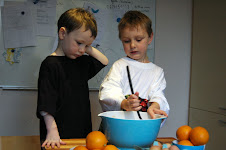




First a couple of words to those new to this blog. As you might have noticed, it has been very quiet round here the last couple of years. This is because the earthquake of L' Aquila has taken its toll of mourning from me and I concentrated on other things. Point is, I cannot use my house in Ofena, so visits to Abruzzo have become a bit ackward.
But I have received so much in return: I wrote a book that put me in contact with people feeling very much like myself and connecting has always a wonderful healing power. So from all of these connections I decided to organize the Heritage trip to l' Aquila in October 2011. My idea is that people know very little of the region, very little of L' Aquila and after the earthquake the rich history and anthropology of this interesting area would somehow be overshadowed by the changes occurred the last three years.
You get an idea by looking at the Facebook community here:
So I decided to think of a program to bring people to L' Aquila along the sheperds' track, the current Highway 17. This is a tales-telling road and I am proud to show it to you. It will be my pleasure to repeat it around the pic-nic in Abruzzo.
In October everybody went with its own car and we spent about € 50 per person for the rich lunch, dinner, coffee etc. This time I am thinking of renting again an 9-persons minibus like I usually do during my cooking courses in Abruzzo, but have to check again on the rates. Please let me know which option is OK with you so that we can start counting heads and make a serious price-tag (rental, highway fees, gas etc.) to it.
We leave in the morning at 8.30 from Ofena, go direclty to visit the Abbey, then we stop in Popoli for a short breakfast and a visit to the monuments in the centre, then we head to San Benedetto in Perillis by taking the wonderful svolte di Popoli, with a great view on the Valle Peligna and Piana di Navelli on the other side.
In S. Benedetto in Perillis I will get prof. Giancaterino Gualtieri of the uni of L' Aquila, to tell us a tiny part of what he knows. He is now retired and historian. He just wrote a fantastic book based on the Church and city archives on the economic and demographic evolution of San Benedetto since its foundation in 1200 something. From this on we will be able to look with other eyes to all the things we will se the rest of the day:










